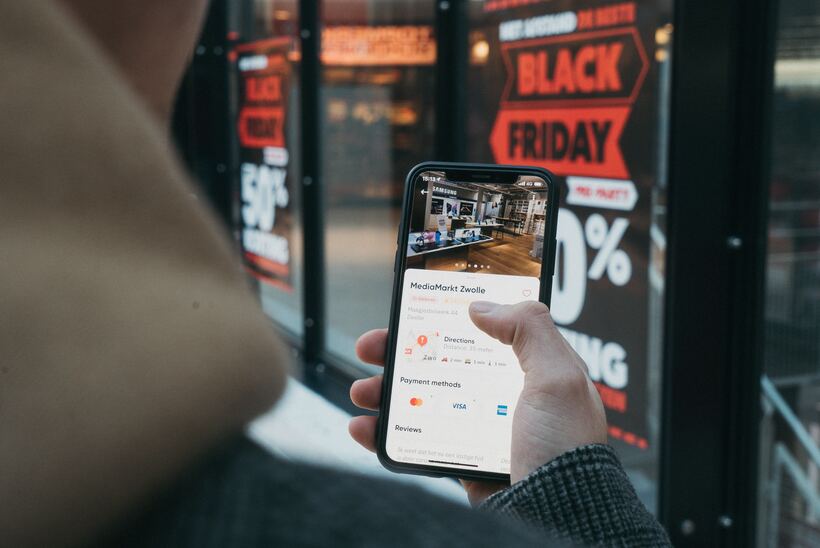
Introduction to Website Load Times
Imagine this scenario: you stumble upon a website that promises to deliver the information or products you’re looking for. Excitedly, you click on the link and wait…and wait…and wait some more. Frustration sets in as seconds turn into minutes, and before you know it, you’ve hit the back button and moved on to another site.
In today’s fast-paced digital world, slow load times can be a deal-breaker for users seeking instant gratification. With attention spans dwindling by the second, your brand’s reputation is at stake if your website fails to meet user expectations when it comes to speed.
We’ll explore how slow load times can harm your brand’s reputation and affect user experience. We’ll also discuss strategies for improving website speed so that your brand can thrive in an increasingly impatient online landscape.
The Impact of Slow Loading on User Experience
Slow loading times can have a significant impact on the overall user experience of your website. When users visit a site, they typically expect it to load quickly and smoothly, allowing them to access the information or services they’re seeking without delay. However, if your website takes too long to load, it can lead to frustration and dissatisfaction among visitors.
One major consequence of slow loading times is an increased bounce rate. When users encounter a sluggish website, they are more likely to abandon it and seek out alternatives that offer faster load times. This not only affects your immediate traffic but also has long-term implications for your brand’s reputation.
In addition to causing frustration for users, slow loading times can also negatively impact conversion rates. If potential customers are unable to quickly navigate through your site or complete their desired actions due to slow loading speeds, they may be less inclined to make purchases or engage with your brand further.
Slow-loading websites may give the impression that your business is outdated or unprofessional. In today’s fast-paced digital landscape, consumers have come to expect efficient and seamless online experiences. A slow website can convey a lack of attention to detail and technical expertise – qualities that are crucial for building trust with your audience.
To avoid these negative consequences and maintain a positive brand reputation, it’s essential to prioritize improving website speed. There are various strategies you can implement such as optimizing image sizes, minimizing HTTP requests by combining files where possible, leveraging browser caching techniques,and choosing reliable hosting providers.
By investing in enhancing the speed of your website,you not only improve user experience but also demonstrate commitment towards providing exceptional service.
The result? A positive perception of your brand,reduced bounce rates,intensified engagement,and increased conversions.
So don’t underestimate the impact of slow-loading pages on user experience, it’s time for every business owner,to take steps towards making their sites faster!

How Slow Load Times can Affect your Brand’s Reputation
Slow load times can have a significant impact on your brand’s reputation. When users visit your website, they expect it to load quickly and efficiently. If it takes too long for your pages to load, users will become frustrated and may leave before even seeing what you have to offer.
First impressions are crucial in today’s fast-paced digital world. If your website fails to deliver a seamless user experience due to slow loading times, visitors will likely associate that frustration with your brand as a whole. This negative association can harm the perception of your brand and make potential customers question the quality and reliability of your products or services.
Slow load times can also affect how search engines view your website. Search engine algorithms take into account page speed as one of the ranking factors. If search engines determine that your site has slow loading speeds, it may be ranked lower in search results, making it harder for potential customers to find you.
High bounce rates are another consequence of slow loading times. Bounce rate refers to the percentage of visitors who leave after viewing only one page on your website without taking any further action. Slow load times often lead users to abandon their visit altogether, resulting in higher bounce rates which signal poor user experience.
To improve website speed and protect your brand’s reputation, there are several strategies you can implement:
– Optimize images: Compressing images without sacrificing quality can significantly reduce file sizes and improve loading speeds.
– Minify code: Removing unnecessary characters from HTML, CSS, and JavaScript files reduces their size and improves site performance.
– Utilize caching: Implementing browser caching allows returning visitors’ browsers to store certain elements of your site so subsequent visits require fewer resources.
By prioritizing website speed optimization techniques like these, you not only enhance user experience but also safeguard the reputation of your brand online.
The Connection Between Load Times and Bounce Rates
When it comes to website performance, load times play a crucial role in determining user behavior. One of the key metrics that is affected by slow loading speeds is the bounce rate. Bounce rate refers to the percentage of visitors who leave a website after viewing only one page.
Slow loading pages can significantly increase bounce rates for several reasons. First and foremost, users have become increasingly impatient in today’s fast-paced digital world. If a webpage takes too long to load, users are likely to lose interest and abandon the site altogether.
Slow load times can create frustration and negatively impact user experience. When visitors encounter delays or buffering issues while trying to access content on your website, they may feel annoyed or inconvenienced. This negative experience can lead them to quickly exit your site without exploring further.
Search engines like Google take into account factors such as bounce rates when ranking websites in search results. If your site has high bounce rates due to slow load times, it sends a signal to search engines that your content may not be relevant or valuable enough for users.
To mitigate these issues and improve both user experience and brand reputation, it is essential to optimize your website’s speed. There are various strategies you can employ for faster load times, such as optimizing image sizes, minifying CSS and JavaScript files, utilizing caching techniques, and choosing a reliable web hosting provider.
By prioritizing speed optimization efforts on your website, you can reduce bounce rates and keep visitors engaged with your content longer – ultimately enhancing their perception of your brand’s credibility and professionalism.
Strategies for Improving Website Speed
Strategies for improving website speed:
1. Optimize images: Large image files can significantly slow down your website’s load time. To improve speed, compress and resize images without compromising on quality.
2. Minify CSS and JavaScript: Reduce the size of CSS and JavaScript files by removing unnecessary spaces, line breaks, and comments. This will help reduce the loading time of these important elements.
3. Enable browser caching: By enabling browser caching, you allow visitors’ browsers to store certain web page elements locally. This means they don’t have to be reloaded every time a user visits your site, resulting in faster load times.
4. Use a content delivery network (CDN): CDNs distribute your website’s static content across multiple servers located worldwide. This ensures that users can access these resources from the server closest to them, reducing latency and improving load times.
5. Upgrade hosting plan or provider: If you’re experiencing consistently slow load times despite optimization efforts, it may be time to upgrade your hosting plan or switch providers altogether. Look for hosts known for their excellent performance and reliability.
6. Monitor plugins and scripts: Excessive use of plugins or external scripts can weigh down your site’s performance. Regularly evaluate which ones are essential and remove any unnecessary ones that could be slowing things down.
7. Speed test regularly: Utilize online tools like Google PageSpeed Insights or GTmetrix to assess your website’s speed performance regularly so that you can identify areas for improvement.
Why Website Speed is Crucial for Maintaining a Strong Brand Reputation
In today’s digital age, where instant gratification is the norm, slow website load times can be detrimental to your brand’s reputation. Users expect websites to load quickly and smoothly, and anything less can leave them frustrated and dissatisfied.
The impact of slow loading on user experience cannot be overstated. It not only leads to higher bounce rates but also decreases engagement and conversions. When users encounter sluggish load times, they are more likely to abandon your site in favor of a competitor who offers a faster, seamless experience.
Beyond the immediate effects on user experience, slow load times can have lasting consequences for your brand’s reputation. Word spreads quickly in the online world, and negative experiences tend to be shared far more often than positive ones. If users consistently encounter slow-loading pages when trying to access your content or make purchases, it will undoubtedly tarnish their perception of your brand.
Search engines like Google take into account website speed as one of the ranking factors. Slow loading speeds can result in lower search rankings, making it harder for potential customers to find you organically.
There are strategies you can employ to improve website speed and protect your brand’s reputation. Optimizing images by compressing them without sacrificing quality is one effective method. Minimizing HTTP requests by reducing unnecessary scripts or plugins can also help enhance performance.
Investing in reliable hosting providers with robust server infrastructure is another smart move that ensures fast response times even during peak traffic periods.
Regularly monitoring and auditing your site’s performance using tools like Google PageSpeed Insights or GTmetrix will enable you to identify areas that need improvement so you can take corrective action promptly.

